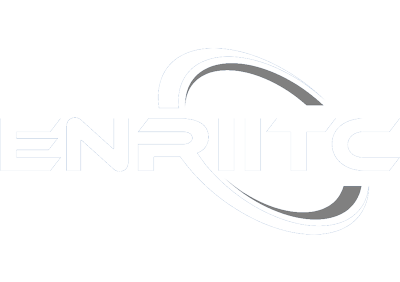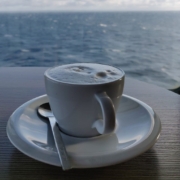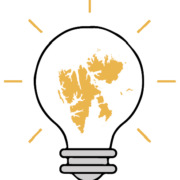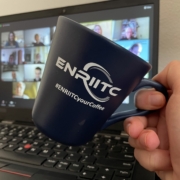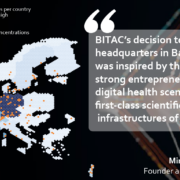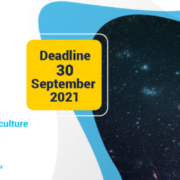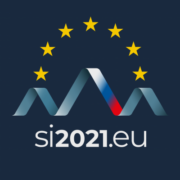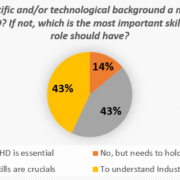We recently concluded our ‘Best of #ENRIITCyourCoffee’ series, which aimed to take you on a journey through the highlights of the #ENRIITCyourCoffee series from the past three seasons. We hope that the highlights gave you a chance to revisit the most exciting moments, reflect on the discussions and look at how our network has grown and developed over the past 18 months.
Before diving into the details, we thought it would be good to give a quick overview of ENRIITC for those who are less familiar with the project.
ENRIITC Project overview
ENRIITC is the European Network of Research Infrastructure and Industry for collaboration. It’s a project founded by HORIZON 2020 and it brings together 11 partners from 7 different countries and more than 60 Associates throughout Europe.
Starting in January 2020, the 3-year project aims to build a permanent pan-European network of ILOs and ICOs (Industrial Liaison and Contact Officers) and enable industry to become a full partner of research infrastructures, supporting the establishment of strategic partnerships between them.
In order to better reach the project goals and to properly build and maintain a stable community, ENRIITC has been carrying out several activities. One of these activities is #ENRIITCyourCoffee (launched on 17 November 2020), which is a weekly, 30-minute webinar series that allows people to join together virtually to the ENRIITC network, in order to learn, collaborate and stay connected. The weekly episode begins with a short presentation on a topic, followed by an open discussion with an interactive Q&A session. Within Season 3, we reached an audience of 50 participants in multiple episodes!
So, what’s the purpose of the Best of #ENRIITCyourCoffee?
There are many reasons why we decided to launch our ‘Best of’ series. Here are just a few:
- To give members of our community a quick recap of the seasons! Besides our faithful members who keep coming back, we often welcomed new participants throughout the 3 seasons. These individuals might have missed the previous episodes. With the ‘Best of’ series, everyone is given the opportunity to meet our speakers, discover each of the topics and listen into the highlights of the discussions!
- To keep moving forward! We have come a long way, but we are keen to move even further. It’s exciting to see where we started with Season 1 and how much we have grown with Season 3. We believe this a testament to the effort from the partners and Associates, as well as the ever-increasing engagement of the ENRIITC community.
- To collect feedback from the Network! Once the ‘Best of’ videos were published, a few polls were launched on LinkedIn and Twitter with the aim of involving the network and collecting direct feedback/opinions.
- To share the outcomes! All the outcomes have been collected, analysed and firstly shared in #ENRIITCyourNetwork, our LinkedIn private group dedicated to the members of the ENRIITC project that will remain as a permanent platform to facilitate data and best practices exchanges, knowledge transfer and much more within the community.
What are the results?
We posted a number of polls related to specific topics to our community. For some of them, it’s clear that a shared thought exists already, while for others further interpretations and discussions are needed in order to determine a common strategy which could be applied and extended at a European level. Below is a quick summary from the polls on ENRIITC Twitter and LinkedIn profiles:
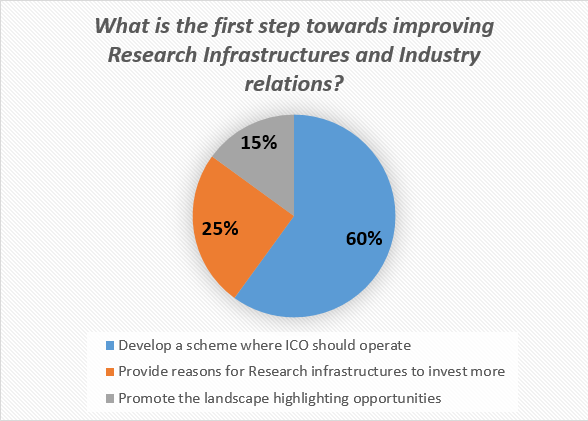
Concerning the first step that should be taken in order to improve the relations between Research Infrastructure and Industry, the highest rated one was “To develop a scheme where ICO should operate”. Therefore, even if the options “to provide valid reasons for RIs to invest more” (25%) and “to promote the landscape by highlighting the real opportunities” (15%) are both important in a hypothetical action plan, the majority of the ENRIITC Community (60%) considered the first as a priority. Does this mean that a common strategy together with a defined “operational guide” will be essential in order to reach this goal?
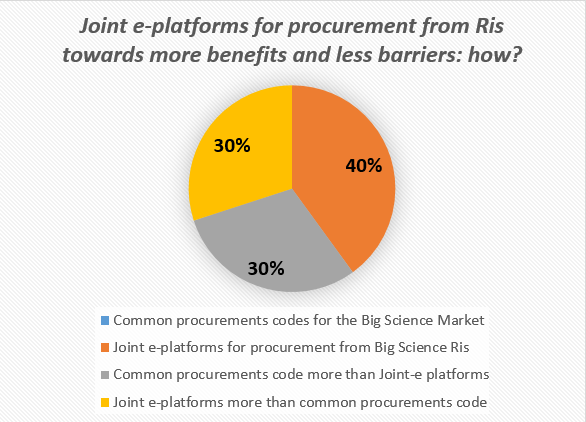
In the previous poll, the common thoughts of our network was clear. However, when it comes to E-platforms for procurement, the poll would suggest that there is no agreed solution yet. Even though there was a slight preference for “Joint e-platform for procurement which should be created directly from Big Science Research Infrastructures” (40%), choosing if common procurement code is more or less important than to Joint e-platforms (in order to increase benefits and decrease the present barriers), it’s still hard to define. Is it possible in the future to find a shared solution or there will always be gaps and different perspectives about this topic?
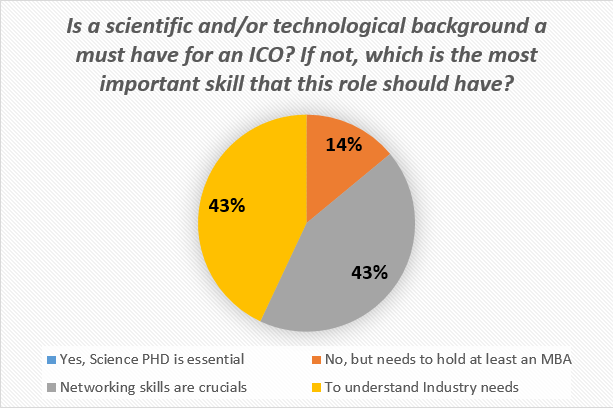
About the ICO role, a question concerning the “must have skills” for this role has been proposed to our network and, by analysing the feedback collected, the outcome looks quite interesting. Actually, it seems that rather than “Having a PhD in Science” (which got 0 preferences) or “Holding an MBA” (which only received 10% of the responses), the ENRIITC community seems equally divided between two essential skills that an ICO should develop and improve in order to properly represent the RIs and build a constructive cooperation with the related industries: “To have strong networking skills” and “To understand Industry needs”.
If from one side, this aspect is evident, from the other one (more over from the Research Infrastructures perspective), a scientific or technological background is still, in some ways, mandatory when it comes to an ICO recruitment process. However, it should be kept in mind that knowledge and preparation itself do not grant a successful daily operation if they do not match with the soft skills needed.

In light of Research Infrastructures, we are becoming more familiar with the concept of Technology Infrastructures, which according to the EU Commission (https://ec.europa.eu/info/publications/technology-infrastructures_en), are “facilities, equipment, capabilities and support services where industrial players can find support to commercialise new products, processes and services, in full compliance with EU regulations”. These technology infrastructures require high investment both in setting-up and keeping up with the state-of-the- art. Analysis shows large regional differences in terms of financial support, fragmentation, risk of duplication and transnational accessibility difficulties.
Therefore, in order to help Europe’s industrial sector, succeed on a local and global level, would it be beneficial to try to map all the EU Technology Infrastructures? If we look at the graph, which has been created starting from the poll’s result, the opinion of the ENRIITC Community is free from doubt: even though a small percentage consider this a not valuable action because Tech Infra in the EU are too many or, in case it’s done, not applicable to SMEs, the mapping realised by sector seems to be the most advantageous. Maybe because it would enable Industries to check those ones related to their domain/work environment, or even because it would be easier to classify and locate them among the wide European scenario. A couple of our members also raised a fourth possible action, which is “to map the knowledge and the technology, rather than the infrastructures itself“. Would this be an option?
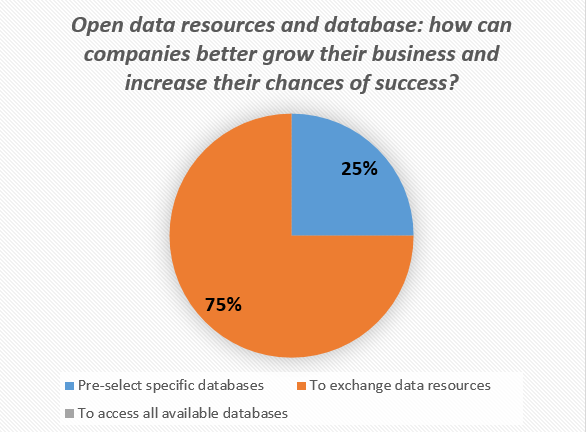
Research Infrastructures, Industries and their main players are certainly our main focus, but what about Open Data Resources and Databases? More transparency and control, together with less restrictions and barriers, to have the possibility to use, re-use and redistribute data in a freeway, became a real necessity. For what refers to Science, Research and Innovation, as well as other work environments, “how can companies better grow their business and be successful”? According to the ENRIITC community, “to access all available databases” doesn’t seem to be an option, while acting towards a “pre-selection of specific databases’ ‘, could actually help to reach the final goal. However, 75% of the participants identified as key to success the possibility of exchanging data resources” between them.
Conclusions
It is important to emphasise the point that these results can not necessarily be considered totally extendable and applicable to each RIs, industry or player in the European landscape. However, the data we collected does serve as a starting point for further discussions and development. Our community is quite active in terms of exchanging best practices, advice and solutions which could positively improve the cooperation between them, either they are ICOs, ILOs, Innovation project leaders or Institution representatives. A lot has been done so far and, even if the “to-do” list is still long and more actions are needed, there is one main steady concept which describes ENRIITC values and mission as its best: #TogetherToImprove.
